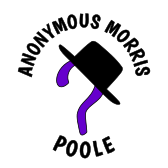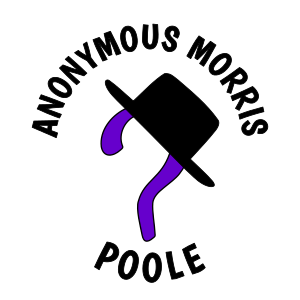"The Morris is an event. It involves dressing up together with a performance of dance in public, possibly with simple accoutrements such as bells, handkerchiefs and various length sticks. The term has been used to cover a very wide range of styles, but recognisably having a common spirit. It is traditional in that the form owes little to 20th century social or art dance. It is a means of personal expression through organised, practised group movements which make limited, but not insignificant, technical demands on the participants. The history of the morris is a mirror to the changes in society, being peripheral and dependent, reflecting the continual natural adaption to new circumstances. The modern claim of continuity is attractive, although by necessity any link is tenuous, and there is little to connect any aspect of it with the morris of only 150 years ago. Its basic simplicity allowed it to absorb and transmute elements of other customs. The content and the appearance is not prescribed and is now certainly a folk art."
Roy Dommett - "What You Didn't Know About the Morris"
There is an excellent video on YouTube of a lecture on the history of Morris and Mumming given by Roy Dommett at the Exeter Instructional Weekend on Saturday 20th October 2012. You can view that video here. Many thanks to Roy and the Morris Federation for permission to share the video.
Morris Dancing Traditions
Morris dancing is the name given to a variety of different folk dances performed for an audience. Historically, dances were collected in the Cotswolds, Welsh Border and the North West regions of the country, and this is reflected in the names of the three most prominent types of morris.
Border Morris
This is the style that we dance. Based on the dances of the English-Welsh border counties of Shropshire, Herefordshire and Worcestershire from where the name originates. The original collected dances are simple and few, so a lot of stuff got made up and has become part of the modern "tradition". Border dancers usually wear tatter jackets, bells and many have a thing for face paint. Dances are vigorous and danced with sticks.
Cotswold Morris
A partial misnomer, as this a tradition more from the Oxfordshire and Gloucestershire regions, which only slightly overlaps with the region known as the Cotswolds. There is a great wealth of collected dances recorded by individuals such as Lionel Bacon and Cecil Sharp. Dancers traditionally wear whites with bellpads and dance with both sticks and handkerchiefs (though not usually at the same time). Most dances are for 6 or 8 dancers, but this tradition also covers solo and duo dances known as jigs.
North West Morris
Mostly processional dances from the North West, particularly Lancashire and Cheshire, traditionally associated with the Rushbearing ceremonies in the late 19th and early 20th centuries. Dancers wear colourful costumes and stomp about in English clogs or boots.
Sword Dances
Not classed as morris, but can be found in the same circles. Types of sword dance are longsword and rapper, both from the North of England. Rapper is danced briskly with short, double-handled swords which allows for conveniently tight sets that can be danced by the bar. Longsword is slower and its weapons more sword-like. Both involve complex figures and the formation of a sword lock.
Molly Dancing
Folk dancing from the Fens around Cambridgeshire and East Anglia. Molly dancing is most associated with Plough Monday, the first Monday after Epiphany. Tradition has it that ploughboys - short on food after winter - would tour around the village landowners, offering to dance for money, threatening punishment to any who refused. The dancers, wishing to gain employment from those same landowners shortly afterwards, would conceal their identities. The name comes from the fact that one dancer - known as the Molly - would have been dressed as a woman. Often danced in heavy boots, without sticks or bells to emphasise the percussive nature of the footfalls.
Links to other resources
If you're interested in the background and history of Border Morris, then these are some good sources to look at:
- 'A Brief Background to Border Morris Dancing'. Andy Anderson's page on the historical background of Border Morris. It is available as a booklet from the Morris Shop (titled Border Morris: A Brief Outline).
- 'Bordering on the Insane', John Kirkpatrick talking about the early days of the Border Morris revival in 1973.
- 'The History of Morris Dancing, 1458-1750' by John Forrest. A history of morris dancing as a whole, from the earliest English record of morris in 1458 until 1750.
Judith's thoughts: It's not a light read, but the quality of the research is outstanding. Forrest quotes from primary sources in the text - household accounts, court records, etc. - he does not make any assumptions that are not supported by the written record. - 'The Roots Of Welsh Border Morris: The Welsh Border Morris Dances of Herefordshire, Worcestershire and Shropshire' revised 1995 (ISBN No. 0 9526285 0 3).
Dave Jones's booklet contains the dozen or so collected historical dances that are complete enough to be danceable. It is available from The Morris Ring Shop - 'Border Morris: Roots & Revival', by Gordon Ashman. This is a transcript of a talk published in the American Morris Newsletter. Interesting, and with some good information.
For more information about us, click on any of the links below


